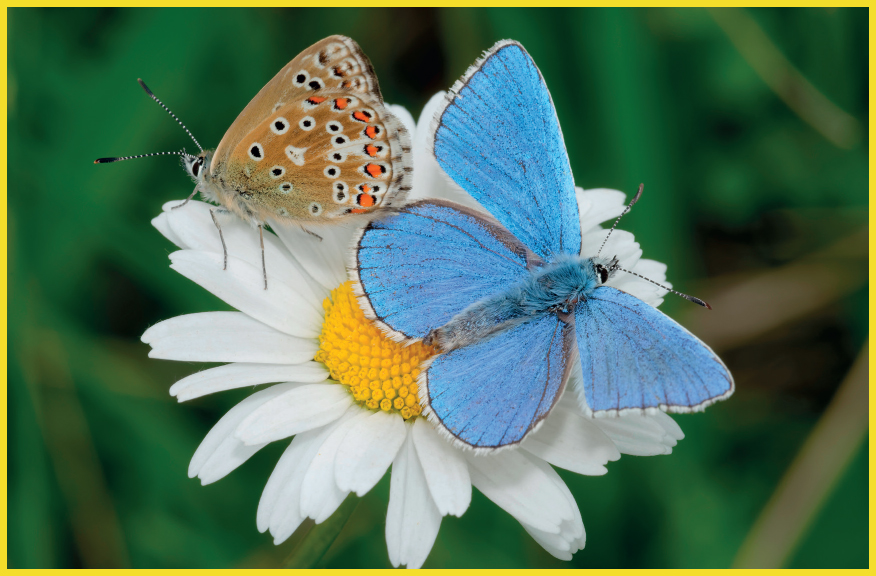32 Adonis Blue
Polyomattus bellargus
Characteristics
Wingspan: 1.18–1.58 in (30–40 mm).
Flight season: May–September.
Nectar sources: Horseshoe vetch.
Habitat: Limestone grassland.

The Adonis blue has very specific habitat requirements and an extraordinary lifestyle. It likes sunny, well-drained south-facing slopes on chalk or limestone grassland where horseshoe vetch grows. It nectars on the yellow flowers of this plant, and its caterpillars feed on the plant’s leaves. Male Adonis blues can be seen flying low to the ground, their brilliant sky-blue upperwings flashing in the sunlight. Females are less conspicuous because they fly less frequently and their upperwings are chocolate-brown. Both species have ocher underwings dappled with orange, black, and white spots. Since they are colonial butterflies, on hot sunny days many can sometimes be seen in the same small area of grassland. They are found in suitable habitats in western Asia and Europe, including the chalk hills of southern England.
Adonis blues overwinter as caterpillars, which are attended by ants that come to feed from sugary secretions they produce. As a trade-off, the ants provide protection from predators. The caterpillars metamorphose in small hollows on the ground near ants’ nests, and the ants bury them under a layer of soil—giving more protection. The year’s first generation of adults emerges in May, with a second generation in July.